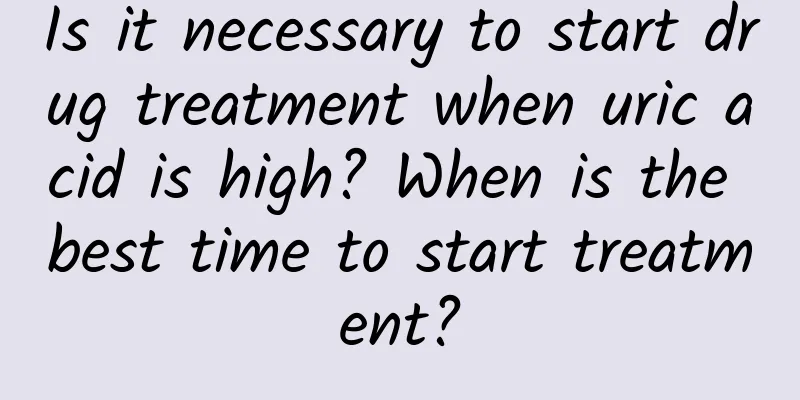Treatment of small submucous uterine fibroids

|
Submucosal uterine fibroids are uterine fibroids that grow protruding into the uterine cavity. Because the surface of the fibroids is covered with endometrium, it increases the area of the endometrium and occupies a space in the uterine cavity, affecting the discharge of menstrual blood. Therefore, it can cause abnormal contraction of the uterus, dysmenorrhea, heavy menstrual flow and period disorders. As the fibroids develop into the uterine cavity, compression symptoms will appear in the adjacent organs. When the fibroids turn red or the pedicles of subserosal fibroids twist, severe abdominal pain may occur. One-third of patients may suffer from infertility. Submucosal uterine fibroids are one of the most common gynecological tumors. Here we will introduce its treatment method. Treatment of small submucous uterine fibroids: 1. Conservative treatment of uterine fibroids Conservative treatment must meet the following conditions: For submucosal uterine fibroids, the tumor must not exceed the size of a 6-week pregnancy; the patient must be postmenopausal and asymptomatic; the patient must be near menopause and can use non-surgical treatment to reduce bleeding; and the patient must be unable to tolerate surgery. Conservative treatment mainly includes expectant management and drug therapy. 1. Patients suitable for expectant treatment: patients aged 40-50 years and above, who have begun to experience menopause and have no obvious clinical symptoms such as excessive bleeding and pain. Specific method: No drugs or other treatments are needed. Gynecological internal examination and B-ultrasound examination are performed every 3 months. If the tumor does not grow rapidly and the bleeding and pain symptoms do not worsen, we can expect the uterine fibroids to gradually shrink as age increases and sex hormone levels decrease. 2. Advantages of drug treatment: The current conservative treatment is mainly drug treatment, which can avoid the pain and sequelae caused by surgery. Generally, if drug treatment is not ideal, minimally invasive or surgical treatment will be considered. Treatment with traditional Chinese medicine: Use "Guiling Xiaoliu Pills" and other medicines to regulate the endocrine system and microcirculation of female patients, regulate blood and qi, disperse blood stasis and resolve nodules, and eliminate uterine fibroids from the source. Western medicine treatment: androgen therapy. For women who are near menopause, have menstrual disorders, and have no malignant changes in the endometrium, methyltestosterone is often used for treatment. 2. Surgical treatment is suitable for people whose fibroids are equivalent to a pregnant uterus of more than one and a half months in size. In addition, if the submucosal uterine fibroids grow rapidly, protrude into the abdominal cavity and tend to twist, they should also be surgically removed. Of course, other indications such as severe anemia, heart disease, and general condition should also be considered when deciding whether to undergo surgery. 1. People who are suitable for hysterectomy: those with large fibroids, severe symptoms, those who are not responsive to conservative treatment or those with malignant diseases. Advantages: This surgery completely removes the uterus and eliminates its symptoms. Disadvantages: The patient loses fertility and no longer has menstruation. 34% of women experience ovarian failure and menopausal symptoms within 2 years after surgery. Hysterectomy affects the integrity of the pelvic floor, shortens the vagina, and has a certain impact on sexual life. After hysterectomy, premature ovarian failure leads to decreased estrogen and increased cardiovascular morbidity. Patients are prone to adverse reactions such as obesity, hypertension, heart disease, and osteoporosis. Patients need 4-8 weeks to recover after surgery. 2. Advantages of hysteroscopic and laparoscopic myomectomy: small incision, less pelvic adhesion formation; fast postoperative recovery, most patients can walk and eat in the afternoon of the day of operation; less wound pain and postoperative fever, seldom need sedatives and analgesics; small and beautiful incision, in line with the aesthetic psychology of young people; shortened hospitalization time, generally patients can be discharged from the hospital 48 hours after surgery. Disadvantages: It is ineffective for larger (over 5 cm) submucosal fibroids. 3. Advantages of minimally invasive coagulation knife technology: preservation of the uterus, no bleeding, less pain, no need for hospitalization, and quick recovery. This method is recognized by American authorities as the best choice for treating uterine fibroids. Disadvantages: It is ineffective for pedunculated subserosal fibroids and fibroids that have become malignant, and they are complicated by acute and chronic genital organ inflammation, so surgery can only be performed after the inflammation is controlled. In short, once you find that you have a small submucosal uterine fibroid, you should seek treatment in time. The use of advanced technology is a new method for treating submucosal uterine fibroids, especially for women who want to preserve their uterus and improve their fertility. Please stay tuned for more content. |
<<: Causes of pain under right breast
>>: Common symptoms and diet of uterine myopathy
Recommend
University of Vermont: Twitter word survey shows we are not as happy as before
On December 21, 2011, scientists from the Univers...
What should I do if the unopened olive oil is expired? What is olive oil?
Olive oil is generally cold-pressed from fresh ol...
What should you avoid during sex after cervical conization?
There are many gynecological diseases around fema...
Sequelae of poor uterine contraction
It is a common phenomenon that women have poor ut...
Can I take a pregnancy test in the afternoon?
When a woman finds that she may be pregnant, she ...
How long should you cook shrimp paste in hot pot? What fruits can you eat after eating hot pot to reduce fat?
Hotpot is not only a delicacy, but also contains t...
Is 95% anemia serious in pregnant women?
Many women will take various measures to check th...
Another breakthrough in AI! 10 types of dementia are diagnosed simultaneously, increasing the accuracy of human doctors by 26%
Written by | Ma Xuewei Preface Dementia is curren...
About montmorillonite powder, after reading this article, I have gained more useful knowledge
With the arrival of spring, digestive diseases ar...
What to do if a girl has hair on her fingers
Many people have body hair. This is generally rel...
How to choose fried dough sticks? Are fried dough sticks a hairy food?
Youtiao is an ancient Han Chinese noodle dish, an...
What causes vaginal bleeding?
If an adult woman experiences a small amount of v...
Can I have children if I'm HPV positive?
We all know that if high-risk human papillomaviru...
How long should I wait to get checked?
Within one month after the IUD is inserted, you s...
What causes uterine contractions during menstruation
Some women experience uterine contractions during...









